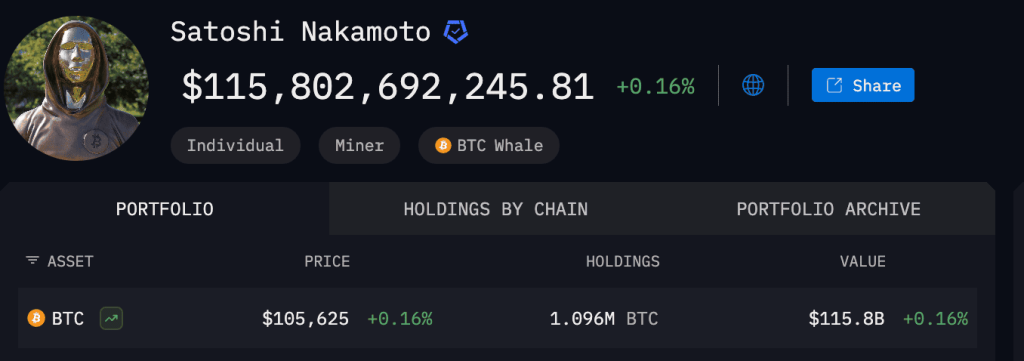Imagine this: You’re walking through your local mall, and there it is—the familiar red star of Macy’s glowing in the distance. For generations, that star has meant holiday shopping sprees, back-to-school hauls, and maybe even a little retail therapy. But now, picture that space empty, the doors locked for good.
That’s the reality for 150 Macy’s stores across the U.S., as the retail giant announces closures as part of its “A Bold New Chapter” plan. If you’ve ever hunted for a bargain in those aisles or watched the Thanksgiving Day Parade floats, this feels like more than just a business move—it’s personal.
Macy’s, a cornerstone of American retail since 1858, is facing a pivotal moment. A $21.3 billion sales drop, shifting consumer habits, and a retail world that’s gone digital have forced the company to rethink its future. By 2026, Macy’s will shrink to just 350 stores, down from over 700 before the pandemic. That’s 150 stores—about 30% of its main chain—closing their doors. But why? And what does this mean for the future of shopping as we know it?
In this article, we’ll dive into the reasons behind Macy’s store closures, explore the company’s plan to pivot toward luxury and digital, and look at what this means for shoppers, employees, and the retail industry. Let’s unpack this shift and see what’s next for a store that’s been part of America’s story for over a century.
A Retail Giant Under Pressure: The Context
Macy’s didn’t just pop up overnight. It started as a small dry goods store in 1858 and grew into a national institution with hundreds of locations. From its flagship Herald Square store in New York City to its iconic Thanksgiving Day Parade, Macy’s has been a symbol of American commerce. But the retail landscape has transformed dramatically, and traditional department stores are struggling to keep up.
The announcement to close 150 stores—about 30% of its namesake locations—comes after years of declining sales and competitive pressures. By 2026, Macy’s expects to operate just 350 stores, a significant reduction from its pre-pandemic footprint of over 700 locations across its brands. The reported $21.3 billion sales drop, driven by a 5.5% decline in net sales in 2023, has raised eyebrows.
But let’s clarify: a 5.5% decline on Macy’s typical annual revenue of around $25 billion would be closer to $1.375 billion, not $21.3 billion. The $21.3 billion figure likely aggregates losses over multiple years or is a miscalculation. Still, the financial strain is real. In the fourth quarter of 2023, sales fell 1.7% to $8.12 billion, and the company posted a net loss of $71 million, compared to a $508 million profit the previous year.
So, what’s pushing Macy’s to make such a drastic move? Let’s break it down.
Why Is Macy’s Closing 150 Stores?
The decision to close 150 stores isn’t about one single issue—it’s a messy mix of challenges that have been building for years. Here’s why Macy’s is pulling the plug on these locations:
1. We’re All Shopping Online Now
Remember when online shopping was just for tech geeks? Not anymore. The pandemic made it normal to order everything from socks to sofas online. Amazon’s fast shipping and endless options make it tough for Macy’s to compete. Even their website took a hit, with online sales dropping 4% in the fourth quarter of 2023. Plus, the middle-class shoppers who loved Macy’s are either hunting deals at Walmart or splurging on luxury brands like Gucci, leaving Macy’s stuck in the middle.
2. Some Stores Just Aren’t Cutting It
Macy’s calls these 150 locations “underproductive”—which is corporate speak for “not making enough money.” These stores, often in declining malls, account for 25% of Macy’s square footage but only 10% of its sales. The new CEO, Tony Spring, has raised the bar for keeping stores open, saying even cash-flow-positive stores might close if they don’t meet new performance standards. Iconic locations like Downtown LA and San Francisco’s Union Square are on the chopping block, showing that no store is too big to fail.
3. E-Commerce Is King
Online shopping isn’t slowing down, and Macy’s has been playing catch-up. Social media users on X (formerly Twitter) haven’t been shy about pointing out Macy’s lag in adapting to digital trends: “They didn’t keep up with changing trends, tastes, and technology.” Macy’s new strategy aims to fix that with a modernized supply chain and better online shopping integration.
4. Competition and a Rough Economy
Macy’s is up against fierce competition. Discount chains like TJ Maxx and direct-to-consumer online brands are stealing market share. Add in economic pressures like inflation—where your grocery bill doubles but your paycheck doesn’t—and shoppers are more cautious. CEO Tony Spring noted, “Our consumer remains under pressure,” reflecting the broader economic headwinds. On top of that, activist investors argue that Macy’s real estate is more valuable than its retail operations, pushing for asset sales. In 2024, Macy’s rejected a $5.8 billion takeover offer from Arkhouse Management and Brigade Capital Management, citing concerns about financing and value.
5. Operational Challenges
Macy’s has faced internal issues too. In 2024, an employee hid up to $151 million in delivery expenses, causing a 3.5% drop in stock value and delaying the third-quarter earnings report. While the company said this didn’t impact revenues or vendor payments, it’s a sign that Macy’s needs tighter financial controls as it navigates its turnaround.
Macy’s “Bold New Chapter” Strategy
Macy’s isn’t just closing stores and calling it a day—they’ve got a plan. The “A Bold New Chapter” strategy, announced in February 2024, is a multi-pronged approach to return to sustainable growth. Here’s what it includes:
-
Closing Underperforming Stores: By 2026, 150 weak stores will be shuttered. As of 2025, 55 of the 66 stores announced in January have already closed, with liquidation sales offering discounts up to 70%. The closures are expected to generate $250 million to $350 million in asset sale gains, which will be reinvested into stronger areas.
-
Investing in Go-Forward Stores: The remaining 350 stores will get upgrades—more salespeople in fitting areas and shoe departments, better visual displays, and improved product offerings. The goal is to create a more compelling in-store experience that keeps customers coming back.
-
Expanding Luxury Brands: Macy’s is doubling down on its luxury brands, Bloomingdale’s and Bluemercury, which have outperformed the main Macy’s stores. Over the next three years, the company plans to open 15 new Bloomingdale’s stores, at least 30 new Bluemercury locations, and remodel 30 existing Bluemercury stores. This pivot reflects the growing demand for luxury goods among wealthier consumers.
-
Growing Small-Format Stores: To adapt to changing shopping habits, Macy’s is accelerating the expansion of small-format stores in outdoor shopping centers. These locations are gaining popularity as indoor malls decline. After opening a test store in San Diego County in 2023, Macy’s plans to add up to 30 more by fall 2025, bringing the total to around 42.
-
Enhancing Digital Capabilities: Macy’s is investing heavily in its online presence. This includes modernizing its supply chain, using data to personalize customer experiences, and improving its website and mobile app to capture a larger share of the e-commerce market.
List of Macy Closing Stores with Location
Macy’s has not publicly released a complete, official list of the exact 150 stores slated for closure as part of its “A Bold New Chapter” strategy announced in February 2024. The company has been rolling out closures gradually, with some specific locations confirmed through news reports, company statements, or local announcements. Below is a compilation of known Macy’s store closures based on available information up to June 9, 2025, along with context about the closure process.
Confirmed Macy’s Store Closures
Macy’s has identified 150 “underproductive” stores for closure by the end of 2026, representing about 30% of its namesake locations. As of early 2025, 55 of the 66 stores announced in January 2024 have already closed, and an additional 50 are slated to close by the end of 2024. Below are some specific locations that have been reported as closing:
- Downtown LA Plaza, Los Angeles, CA
- Located in a historic shopping area, this store’s closure reflects Macy’s retreat from underperforming urban locations.
- Union Square, San Francisco, CA
- An iconic flagship store, its closure highlights the challenges of maintaining high-cost, high-profile locations in declining retail areas.
- Arlington, VA (Ballston Common Mall)
- Announced as part of the initial wave of closures in January 2024.
- Bay Fair, San Leandro, CA
- Part of the 2024 closure announcements, located in a struggling mall.
- Simi Valley Town Center, Simi Valley, CA
- Confirmed in early 2024 as part of the first 55 closures.
- Lihue, HI (Kukui Grove Center)
- A smaller-market store included in the 2024 closure list.
- Tallahassee, FL (Governor’s Square)
- Reported as closing in 2024, reflecting Macy’s exit from certain regional malls.
- Deptford Mall, Deptford, NJ
- Announced in 2024, part of the broader mall-based closures.
- Southland Mall, Cutler Bay, FL
- Confirmed as closing in 2024, tied to declining mall performance.
- Crystal Mall, Waterford, CT
- Included in the 2024 closure announcements.
Additional Closure Details
- Scope and Timeline: The 150 stores account for 25% of Macy’s square footage but only 10% of its sales, indicating they are low performers. Of these, 55 closures were completed by early 2025, with 50 more planned by the end of 2024, and the remaining to follow by 2026.
- Geographic Spread: Closures are nationwide, affecting urban, suburban, and smaller markets. Many are in declining indoor malls, which have seen reduced foot traffic.
- Unconfirmed Locations: For the remaining stores, Macy’s has not provided a public list, likely to manage employee and customer communications locally. Local news outlets and social media posts on X often report closures as they are announced, but no comprehensive list exists.
Sources of Information
- News Reports: Outlets like USA Today, CNN, and Retail Dive have reported specific closures, such as those in Los Angeles, San Francisco, and Arlington, based on Macy’s announcements or local confirmations.
- X Posts: Social media chatter on X has mentioned closures in places like Tallahassee and Deptford, often from employees or shoppers noticing liquidation sales. For example, posts in early 2025 highlighted the Union Square store’s closure in San Francisco.
- Macy’s Statements: The company confirmed the closure of 55 stores by early 2025 and plans for 50 more by the end of 2024, but it has not released a detailed list of all 150 locations.
Why a Full List Isn’t Available
Macy’s is likely withholding a complete list to:
- Manage Public Perception: Announcing all 150 closures at once could amplify negative sentiment.
- Coordinate with Stakeholders: Gradual announcements allow time to notify employees, landlords, and local communities.
- Flexibility: Some stores may be evaluated closer to 2026, and the list could shift based on performance.
How to Find Specific Closures
To identify whether a specific Macy’s store is closing:
- Check Local News: Search for news articles or TV reports in your area, as closures are often covered by local media.
- Visit Macy’s Website: The store locator on macys.com may indicate if a location is closing or has closed, though it’s not always explicit.
- Monitor X: Search for posts mentioning “Macy’s closing” with your city or store name for real-time updates from shoppers or employees.
- Contact the Store: Call your local Macy’s to ask about its status, as staff may confirm upcoming closures.
Context and Implications
The closure of these 150 stores is part of Macy’s broader strategy to:
- Focus on Profitable Locations: The remaining 350 stores will receive upgrades like more staff and better displays.
- Pivot to Luxury: Macy’s is expanding Bloomingdale’s and Bluemercury, with 15 and 30+ new locations, respectively.
- Grow Small-Format Stores: Up to 30 new small-format stores will open by fall 2025 in outdoor shopping centers.
- Boost Digital Sales: Investments in e-commerce aim to offset losses from physical stores.
These closures could impact up to 28,500 jobs over three years and may accelerate the decline of indoor malls, where many of these stores are anchor tenants. Liquidation sales at closing stores offer discounts of up to 70%, providing opportunities for bargain hunters.
What This Means for the Retail Industry
Macy’s store closures aren’t just a Macy’s problem—they’re a sign of broader trends reshaping retail. Here’s how this move could ripple through the industry:
Impact on Malls
Many of the closing Macy’s stores are anchor tenants in malls. Without them, these malls could face a domino effect—more store closures, less foot traffic, and potentially, mall closures. However, upscale malls with unique retailers, like the Mall at Short Hills in New Jersey, are likely to remain resilient.
Shift to Luxury and Discount Retail
Retail is increasingly polarized: success is concentrated at the low end (discount stores like Walmart) and the high end (luxury brands). Macy’s pivot to luxury through Bloomingdale’s and Bluemercury aligns with this trend, but it risks alienating its core middle-class shoppers. Meanwhile, discount retailers continue to thrive by offering affordability in a tough economy.
Real Estate Opportunities
Macy’s store closures are expected to unlock significant real estate value, with the company estimating $500 million to $650 million in store-monetization proceeds. Investors, including activist groups, see Macy’s real estate as a goldmine, potentially worth more than its retail operations. This could lead to further pressure to sell or repurpose these properties.
Consumer and Employee Impact
For shoppers, fewer Macy’s stores mean fewer convenient locations, though clearance sales offer opportunities for deep discounts. For employees, the closures could result in significant job losses—estimates suggest up to 28,500 jobs could be cut over three years. Macy’s hasn’t provided an exact figure, as closures will happen gradually.
Consumers may also notice changes in product offerings and store experiences as Macy’s focuses on luxury and small-format stores. The emphasis on Bloomingdale’s and Bluemercury could attract wealthier customers but might leave middle-class shoppers feeling left behind.
Criticism and Challenges
Macy’s strategy isn’t without its skeptics. Retail expert Nick Egelanian argues that Macy’s would be better off with just 200 full-line stores and questions the viability of its off-price and small-format strategies. Since the “Bold New Chapter” plan was announced, Macy’s stock has fallen about 15%, reflecting investor skepticism. The company’s rejection of takeover bids and ongoing proxy fight with Arkhouse Management highlight tensions over its future direction.
Social media sentiment on X reflects frustration with Macy’s inability to adapt. One user noted, “Macy’s is so behind that even the computers they use to train new employees barely work 90% of the time.” Ouch.
The Road Ahead for Macy’s
Macy’s is at a crossroads, balancing its storied legacy with the demands of a digital-first, luxury-leaning future. Closing 150 stores is just the first step. To succeed, Macy’s must execute its strategy flawlessly—improving customer experiences, strengthening its digital presence, and capitalizing on the growth of Bloomingdale’s and Bluemercury. The company’s ability to navigate economic pressures, competition, and investor expectations will determine whether it can reclaim its position as a retail leader.
Conclusion: A Pivotal Moment for American Retail
Macy’s decision to close 150 stores after a significant sales drop underscores the existential challenges facing traditional department stores. Driven by shifting consumer behaviors, the rise of e-commerce, and economic pressures, these closures are part of a broader strategy to reposition Macy’s for a digital and luxury-focused future. While the “Bold New Chapter” plan offers a path forward, its success is far from guaranteed.
For consumers who grew up with Macy’s, employees counting on those jobs, and investors watching the stock, the next few years are make-or-break. This isn’t just a store closing—it’s a piece of America shifting. Those empty Macy’s spots might mark the end of an era, but they could also spark fresh ideas and innovation in retail.














 Bitcoin
Bitcoin  Ethereum
Ethereum  Tether
Tether  XRP
XRP  USDC
USDC  Lido Staked Ether
Lido Staked Ether  TRON
TRON  Cardano
Cardano  Avalanche
Avalanche  Toncoin
Toncoin  Wrapped SOL
Wrapped SOL